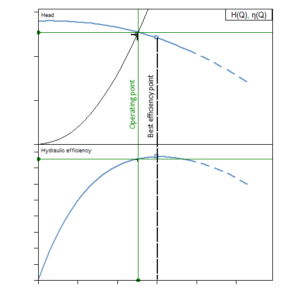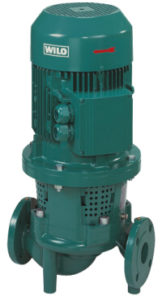Glanded Pump
Design
The uniform feature of glanded pumps is the separation between the pumped fluid and theirst drive motor. The connection between the impeller in the pump body and the motor is made by either a common shaft or by coupled shaft parts. The rotating motor component remains dry (thus the term Dry-Motor Pump). The rotor support by means of roller bearings requires separate lubrication. The pumps are normally driven by IEC-standards electric motors but also by special design motors up to explosion-protected versions.
Pump types / function
Glanded pumps are of two distinctly different designs:
- Monobloc Glanded Centrifugal Pumps
- DIN-Standards Centrifugal End-Suction Pumps
Glanded pumps are louder than glandless pumps. The noise is caused by the roller bearing (ball bearing or needle bearing) and the fan wheel of the surface-cooled electric motor. The noise of the pump itself - flow noise, bearing noise - is completely negligible, unless unusual operating situations occur (cavitation, etc.).




